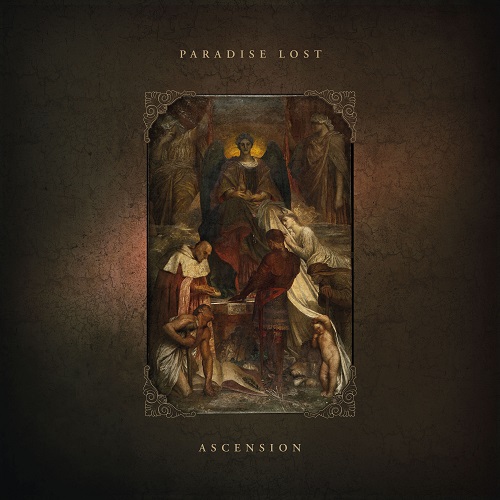DEEP PURPLE «24KT Gold + Anniversary Edition» (37 × CD + Blu-ray Audio + Vinyl LP • Issue 1993-2025)
Performer: DEEP PURPLE / ディープ・パープル Album / collection: «Golden Collection / ゴールデン・コレクション» Series: 24Kt Gold CD + Anniversary Edition Collection + Box Set’s Label: (c)(p) 1970-2025 Warner Bros. | Audio Fidelity | EMI Records Ltd. Source: Rip by DaRReL™, KoGGaN™ scans by inet… Official DR value: •11•10•8•12•8•10•12•8/8•8/8/6/9•11•12•9•10•11/7• •13/13•11/12/12•11/13/13•7/7•9/9/11/12•10/9/9/9/8• Catalog (Barcode): much… Genre / Style: Rock, Classic Rock, Hard Rock Year (info): 1970-1925 (37 × CD +

DEEP PURPLE «24KT Gold + Anniversary Edition» (37 × CD + Blu-ray Audio + Vinyl LP • Issue 1993-2025)
Performer: DEEP PURPLE / ディープ・パープル Album / collection: «Golden Collection / ゴールデン・コレクション» Series: 24Kt Gold CD + Anniversary Edition Collection + Box Set’s Label: (c)(p) 1970-2025 Warner Bros. | Audio Fidelity | EMI Records Ltd. Source: Rip by DaRReL™, KoGGaN™ scans by inet… Official DR value: •11•10•8•12•8•10•12•8/8•8/8/6/9•11•12•9•10•11/7• •13/13•11/12/12•11/13/13•7/7•9/9/11/12•10/9/9/9/8• Catalog (Barcode): much… Genre / Style: Rock, Classic Rock, Hard Rock Year (info): 1970-1925 (37 × CD +
19 09, 2025
Paradise Lost - Ascension 2025
Исполнитель: Paradise Lost Альбом: Ascension Жанр: Doom Metal, Death Metal, Gothic Metal Год: 2025 Страна: UK (Halifax, West Yorkshire, England) Лейбл: Nuclear Blast Формат: FLAC (tracks) Official DR value: DR6 Разрядность: 24bit / 48kHz Stereo Размер: 773 MB Инфо: bandcamp Залито на: XFile (3% восстановление) «Exclusive for Lossless-Galaxy»

Paradise Lost - Ascension 2025
Исполнитель: Paradise Lost Альбом: Ascension Жанр: Doom Metal, Death Metal, Gothic Metal Год: 2025 Страна: UK (Halifax, West Yorkshire, England) Лейбл: Nuclear Blast Формат: FLAC (tracks) Official DR value: DR6 Разрядность: 24bit / 48kHz Stereo Размер: 773 MB Инфо: bandcamp Залито на: XFile (3% восстановление) «Exclusive for Lossless-Galaxy»
18 09, 2025
JUDAS PRIEST «Discography» (37 × CD · Japan First Pressing · 1974-2024)
Performer: JUDAS PRIEST / ジューダス・プリースト Album / collection: «Discography / ディスコグラフィー» Label: (c)(p) 1974-2024 Epic / CBS/Sony Group Inc. / Sony Records Int’l Source: Rip by KoGGaN™ scans by inet… Official DR value: •12•11•12•11•13•11•14•12•12•12•12•13• •13•11•11•12•11/12•12•11•8•10•7/7/7/7•6•7/7/10•8/8•8•5/5•6•7• Catalog (Barcode): much… Genre / Style: Rock, Hard Rock, NWOBHM, Heavy Metal Year (info): 1974-2024 (37 × First Pressing CD, Collection—) Format: WV (image + .cue) Bitrate: lossless

JUDAS PRIEST «Discography» (37 × CD · Japan First Pressing · 1974-2024)
Performer: JUDAS PRIEST / ジューダス・プリースト Album / collection: «Discography / ディスコグラフィー» Label: (c)(p) 1974-2024 Epic / CBS/Sony Group Inc. / Sony Records Int’l Source: Rip by KoGGaN™ scans by inet… Official DR value: •12•11•12•11•13•11•14•12•12•12•12•13• •13•11•11•12•11/12•12•11•8•10•7/7/7/7•6•7/7/10•8/8•8•5/5•6•7• Catalog (Barcode): much… Genre / Style: Rock, Hard Rock, NWOBHM, Heavy Metal Year (info): 1974-2024 (37 × First Pressing CD, Collection—) Format: WV (image + .cue) Bitrate: lossless
18 09, 2025
Жанры
Lossless Galaxy Release
Русская музыка
--Поп
--Рок
--Панк
--Альтернатива
--Металл
--Рэп, Хип-Хоп, R'n'B
--Джаз и Блюз
--Фолк
--Шансон, Авторская песня
--СССР
Зарубежная музыка
--Pop
--Rock
--Hard Rock
--Progressive & Art-Rock
--Pop-Rock & Soft Rock
--Instrumental Rock
--Heavy, Traditional, Industrial Metal
--Power, Gothic, Sympho Metal
--Thrash, Speed, Groove, Modern Metal
--Death, Melodic Death, Doom, Dark Metal
--Black, Pagan, Folk, Viking Metal
--Alternative
--Punk
--Disco, Eurodance
--Rap, Hip Hop, R'n'B
--Reggae, Ska, Dub
--Jazz, Blues, Soul
--Folk, Country, Ethnic
--Electronic, Ambient, New Wave
--House, Techno, Trance
Другие жанры
--New Age, Relax, Meditative & Flamenco
--Chillout, Lounge, Downtempo, Trip-Hop
--Drum & Bass, Jungle, Breakbeat, IDM
--Classical / Классическая музыка
--Soundtrack
--Музыкальные сказки
Vinyl Rip
HI-Res / DVD-Audio / DTS
--SACD
--DSD
--DVD-Audio
Сборники Lossless-Galaxy
Альбомы 2022
Альбомы 2023
Альбомы 2024
Теги
1st Press 2022 2023 2024 2025 70... AOR Black Metal Blues Blues Rock Bootleg Series Classic Rock Death Metal Discography Exclusive for Lossless-Galaxy Folk Rock Fusion Hard Rock Heavy Metal Hi-Res Japanese Edition Jazz Jazz Rock lossless Melodic Death Metal Melodic Rock Modern Electric Blues Pop Pop Rock Power Metal Prog Rock Progressive Metal Progressive Rock Psych Rock Psychedelic Rock Rock SACD Symphonic Metal Thrash Metal Дискографии от KoGGaN
Архивы
Опрос
В каком формате хотели бы видеть релизы на сайте ?
 Автор: artmuss, 28 февраля 2019, Комментариев: 0, Просмотров: 1 391
Автор: artmuss, 28 февраля 2019, Комментариев: 0, Просмотров: 1 391The Mills Brothers - Swing is the Thing - Original 1934-1938 Recordings (2005)
Artist: The Mills Brothers - Original 1934-1938 Recordings
Title Of Album: Swing is the Thing
Year Of Release: 2005
Label (Catalog#): Naxos Nostalgia [8120680]
Country: United States
Genre: Vocal Jazz, Swing, Traditional Pop, Easy Listening
Quality: FLAC (tracks)
Bitrate: Lossless
Time: 58:45
Full Size: 166 mb
Upload: Turbobit
Title Of Album: Swing is the Thing
Year Of Release: 2005
Label (Catalog#): Naxos Nostalgia [8120680]
Country: United States
Genre: Vocal Jazz, Swing, Traditional Pop, Easy Listening
Quality: FLAC (tracks)
Bitrate: Lossless
Time: 58:45
Full Size: 166 mb
Upload: Turbobit
The Mills Brothers, sometimes billed as The Four Mills Brothers, and originally known as The Four Kings of Harmony, were an African-American jazz and pop vocal quartet of the 20th century who made more than 2,000 recordings that combined sold more than 50 million copies, and garnered at least three dozen gold records. The Mills Brothers were inducted into The Vocal Group Hall of Fame in 1998.
TRACKLIST:
01. Sweet Georgia Brown
02. Old Fashioned Love
03. Miss Otis Regrets
04. Sweeter Than Sugar
05. Rockin' Chair
06. I've Found A New Baby
07. Some Of These Days
08. Limehouse Blues
09. Lulu's Back In Town
10. Sweet And Slow
11. London Rhythm
12. Solitude
13. Swing Is The Thing
14. Carry Me Back To Old Virginny
15. Darling Nellie Gray
16. Organ Grinder's Swing
17. Caravan
18. Flat Foot Floogie
19. My Walking Stick
20. Funiculi Funicula
21. The Yam
22. The Lambeth Walk
:: DOWNLOAD LINK ::
Внимание! У Вас нет прав для просмотра скрытого текста.
:: MusicMuss ::
Изменил: artmuss по причине: Re-Up
Похожие новости:
Комментарии отсутствуют
Добавить комментарий!
Информация
Посетители, находящиеся в группе Гости, не могут оставлять комментарии к данной публикации.



![VA - Bar Jazz 2CD (2011) [FLAC|Lossless]](/uploads/posts/2011-06/thumbs/1308319845_31we2iixkqjubnt.jpeg)

![VA - The Best Of Schmaltz [2CD] (2000) [Remastered]](/uploads/posts/2016-11/thumbs/1480372655_front.jpg)
